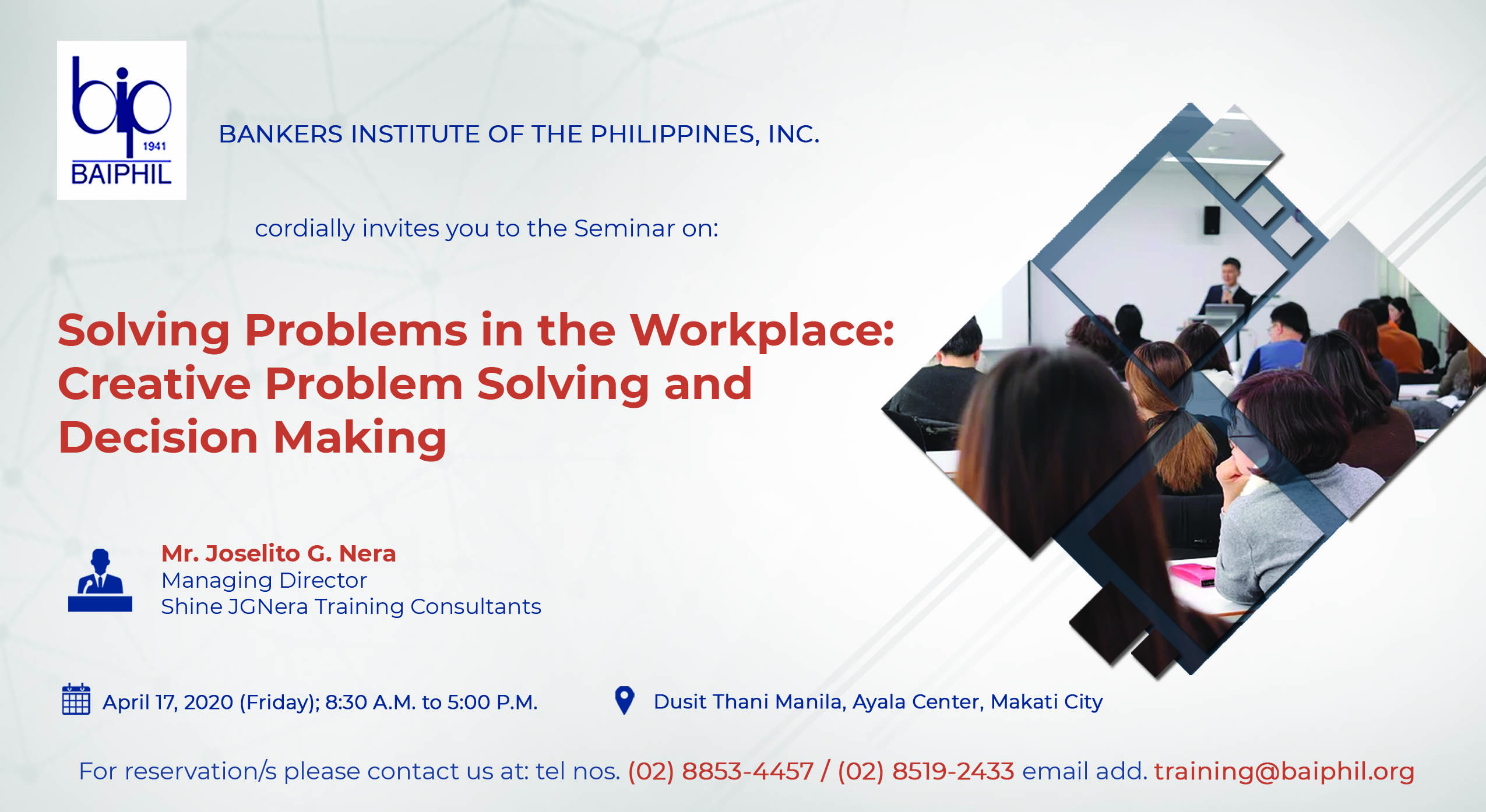Description
Schedule:
April 17, 2020 (Friday); 8:30 A.M. to 5:00 P.M.
Venue:
Dusit Thani Manila, Ayala Center, Makati City.
Course Objectives:
At the end of the program, participants must be able to:
1. Display a sense of urgency and decisiveness in attending to workplace problems and decisions.
2. Exhibit a balance of creativity and critical thinking in dealing with workplace problems and decisions
3. Perform the five (5) steps in analyzing and prioritizing workplace concerns, conduct the four(4) steps
in Problem Analysis in determining root causes of problems and developing solutions options.
4. Apply the seven (7) steps in decision Analysis in determining the best course action among available
alternatives.
5. Execute the four (4) steps in Potential Problem Analysis in anticipating and dealing with potential
threats to a decision /solution.
6. Provide solutions to problems and make the needed decisions using a variety of sound tools and
techniques.
7. Prepares sound and comprehensive action plans for one’s work unit.
8. Effectively communicate action plans and get buy-in of subordinates.
Course Outline:
Module 1: GEARING UP FOR PROBLEM SOLVING AND DECISION MAKING
• Problem Solving and Decision Making: A Reality in Managerial and Supervisory Work
• A Shared Definition of “Problems” and “Concerns”
• The Right Mindset in Solving Problems and Making Decision
• Common Pitfalls in Problem Solving & Decision Making
• The SAPADAPPA Model: A Systematic Approach in Problem Solving and Decision Making
Module 2: CREATIVE VS. CRITICAL THINKING
• Am I Creative or Critical?
• Creative Thinking: Thinking Novel, Big and “Out of the Box”
• Critical Thinking: Logical, Practical and “Best Option” Thinking
• Which One is a Better Type of Thinking?
• Different Uses of Creative Thinking and Creative Thinking
• Developing both types of Thinking
• Creativity Tools: Different Idea Generation Techniques
• Logical Thinking Tools: Different Evaluation Techniques
Module 3: SITUATIONAL ANALYSIS: CREATING ORDER OUT OF CHAOS
• The Objective of Situational Analysis: Prioritizing the Manager’s Concerns
• Defining “Concerns”: Problems, Decision or Potential Problems
• The Five Steps in Situational Analysis
• Recognizing and Describing your Concerns in Detail
• Criteria in Prioritizing Concerns
• Knowing the Right Course of Action for the Concern
• Preparing your Containment Action: Preventing the Concern from Worsening.
Module 4: PROBLEM ANALYSIS: CLOSING THE GAPS
• The Four Steps in Problem Solving
• Measuring the Problem
• Developing the Problem Statement
• Determining the Root Causes
• The Fishbone Diagram: Cause Identification
• Validating the Identified Causes
• The Pareto Principles
• Creating Solutions Options
Module 5: DECISION MAKING: CHOOSING THE BEST OPTION
• The Steps in Decision Analysis
• Clarifying the Real Purpose of the Definition
• Understanding the Type of Decision Required
• Studying the Context: Factors Surrounding the Decision
• Developing the Criteria Used in Selecting the “Best Choice”
• The Decision’s Impact on “Numbers” and “Intangibles”
• The Time-Cost-Performance Model
• Identifying and Involving the Stakeholders
• Some More Decision-Making Tools:
o Matrices
o Cost-Benefit Analysis
o Decision Trees

